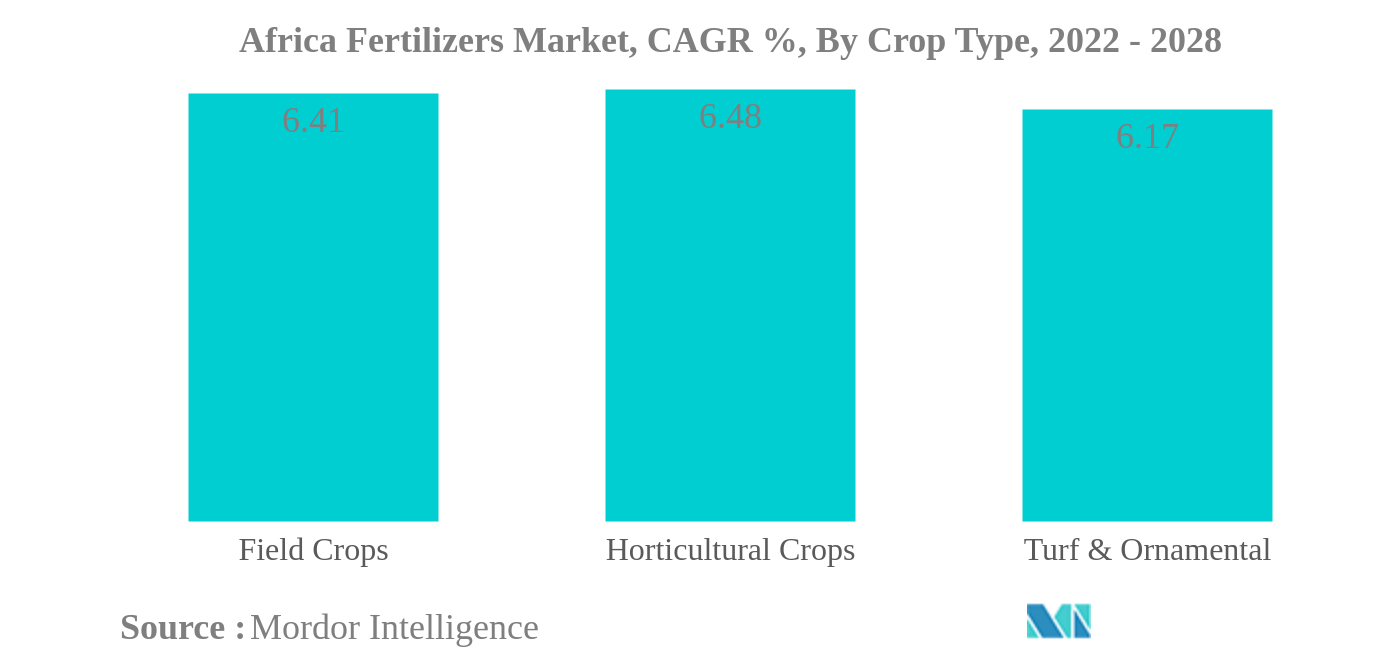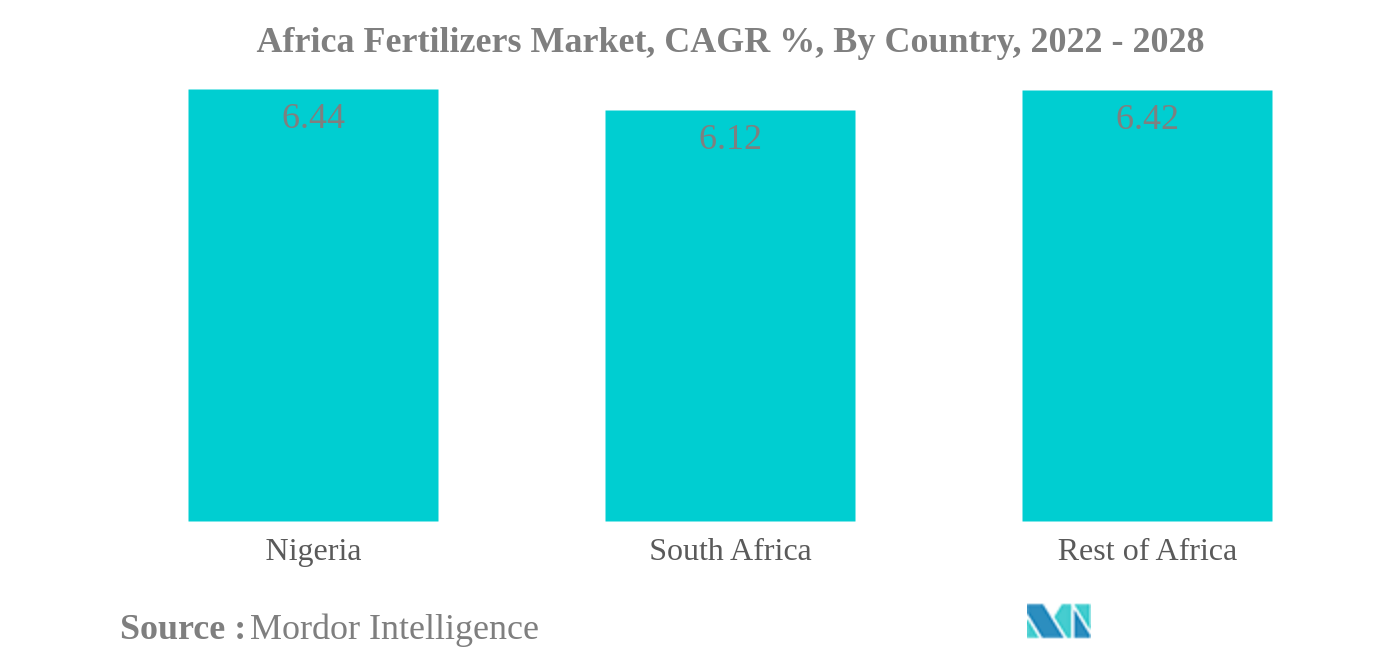Market Trends of africa fertilizers Industry
This section covers the major market trends shaping the Africa Fertilizers Market according to our research experts:
Field Crops is the largest segment by Crop Type.
- Field crops consume the most amount of fertilizers, accounting for 88.0% of the total fertilizer consumption in Africa. The consumption volume of these crops was 3.0 million metric tons in 2021, valued at USD 7.80 billion.
- Turf and ornamental crops ranked second and accounted for a share of 9.0% in the consumption of fertilizers in Africa in 2021. The market was valued at USD 829.6 million in 2021, with a volume consumption of 489.5 metric tons, owing to the growing demand for African flowers in the international markets.
- The horticultural crops accounted for just 3.0% of the total fertilizer consumption in Africa, valued at USD 230.1 million, in 2021, with a volume consumption of 133.9 thousand metric tons. However, the area under the cultivation of horticultural crops increased from 36.5 million hectares in 2016 to 37.7 million hectares in 2021. This increase in area was due to the growing demand for high-value crops like fruits and vegetables in the region, with increasing cases of hidden hunger and malnutrition. The need for higher productivity per hectare of these crops will increase the application of fertilizers in horticultural crops.
- The use of specialty fertilizers is increasing due to their ease of handling and application. The increase in the adoption of micro-irrigation systems is increasing the usage of specialty fertilizers.
- The application of fertilizers in the respective crop types is anticipated to grow during the forecast period, owing to the increasing need for food to feed the growing populations, for obtaining higher yields, and for crop productivity to meet the demand for respective crops.

South Africa is the largest segment by Country.
- Africa has the potential to become a major fertilizer market as the region has abundant mineral reserves of three major plant macronutrients: nitrogen, phosphate, and potash. The continent is also subject to rapid population and income growth, along with changing food consumption habits. The pace and diversification of the region’s food needs may require the region’s farmers to increase agricultural production and yields, which is anticipated to boost fertilizer demand.
- South Africa is one of the major agriculture-producing countries in the continent and is import-dependent. All the potassic fertilizers are consumed domestically, and 60%-70% of nitrogenous fertilizers are imported. The South African fertilizer market has been operating in a deregulated environment, with no import tariffs or government-sponsored schemes.
- In this deregulated environment, the prices of fertilizers marketed in the country are highly influenced by currency exchange rates (ZAR/USD), overseas prices, and shipping costs. Thus, the growers are aiming for the long-term sustainability of high-quality grain production. Although crop rotations play an important role in maintaining and improving soil fertility, fertigation of the soil remains the major source of nutrient supply to the soil to balance the soil nutrient, as these are periodically consumed due to continuous production.
- According to the Food and Agriculture Organization, Nigeria has one of the highest rice consumption rates worldwide, producing 7 million metric tons of rice annually. The country’s economic growth over the last five years has been driven by growth in the agricultural sector, which is anticipated to boost the segment's growth during the forecast period.

